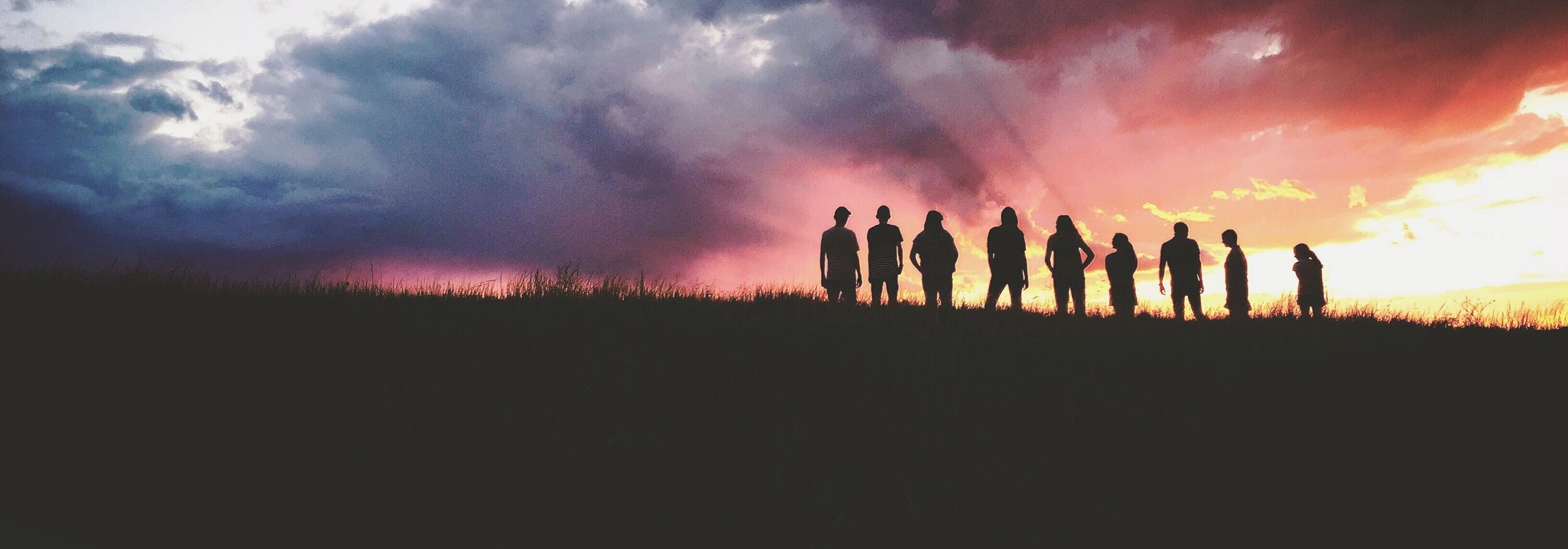Attachment bonds are integral to this human experience we share. We evolved in tribes and thus our brains are social organs that respond on a neurobiological level to our interactions with others. One way neuroscience research has found this to be true is that signals of potential rejection or abandonment tend to affect our brain chemistry similarly to if we were facing a lion in the wilderness - sending us into fight-or-flight survival mode. That served us well when we were likely to die without our tribal connections. Unfortunately, it’s an evolutionary adaptation that’s a bit outdated and tends to cause us more trouble than good these days.
Have you ever acted in a way you weren’t proud of when facing fears of rejection or pushed someone away who you were scared may reject you? In the context of modern love that’s how we fight-or-flight. When our fear responses are activated we’re also inclined to make snap judgments - a tendency that’s useful in actual life or death situations, yet often damaging in the context of romantic conflict. What’s more is that our early childhood experiences determine how sensitive our brains become to fear activation.
John Bowlby, the psychoanalyst who pioneered attachment theory, hypothesized that attachment is all about us seeking emotional regulation and feelings of safety in times of perceived danger. He purported that our attachment and fear systems are intricately connected. Mary Ainsworth at the University of Virginia then expanded on his theory to identify three primary attachment styles that have since been proven to be universal across cultures: secure, insecure-avoidant, insecure-anxious (with a fourth rare style – disorganized). Then further down the road in Louis Cozolino’s book “The Neurobiology of Human Relationships: Attachment and the Developing Social Brain” he detailed neuroscience research that proves “beyond irrefutably” that these attachment styles stabilize in our neural circuitry by the time we’re 12 - 18 months dependent on the responsiveness of our early caregivers.
Attachment Styles:
Secure: If our caregivers are responsive to our distress in those early days we learn that we’re worthy of our needs getting met and that we can depend on other people to meet them. With that mindset our fear responses are less sensitive to activation. We also tend to be more comfortable expressing our needs clearly and forming interdependent bonds in intimate relationships.
Insecure - Anxious/Avoidant: If our caregivers were not responsive to our distress or we experienced early traumas, however, we’re likely to learn that we must be hypervigilant in order to make sure our needs are met. We become distrustful of others and assume that we can’t depend on them to meet our needs. This causes us to become hypervigilant and alters the fear systems of our brains on a neurobiological level increasing the sensitivity and intensity of fear responses. I conceptualize anxious individuals as people who are more likely to respond to that fear in fight mode and avoidant types as the more flight oriented ones. In relationships fighting can look like outward expressions of anger or less direct tactics of trying to get needs met; whereas flight looks like withdrawal from connection.
The good news is that research in “neural plasticity” has proven that those of us with insecure attachment have the capability of shifting our brains towards security in our adult years. We, humans, are super adaptable creatures! In the same way that our brains can initially adapt to unhealthy situations, they can also adapt back in healthier ways. It’s not an easy thing to do - but with dedication, patience, compassion (for self and from others), and sustained effort people with insecure attachment can learn to have more discernment and control in relation to their fear responses - a phenomenon often termed “earned secure attachment”.
Nearly all of the research around how we can achieve that goal has been done in the context of monogamous dyadic relationships. That research has shown that it’s very important to foster security in one’s relationships to create this shift. That makes sense seeing as the fears of rejection that trigger these responses inherently involve other people. It also makes sense because the attachment chemical oxytocin has been proven to calm our fear systems on a neurobiological level and it is released most strongly through connection with others. If you’re single or non-monogamous, however, don’t fret! Much of the research related to fostering secure attachment can be applied to forming healing relationships beyond the romantic dyadic context if we open our minds (and our hearts)!
Amir Levine, the author of the book “Attached: The new science of adult attachment - and how we can find and keep love” uses the acronym CARRP to help people remember the main qualities he’s identified bring security to relationships - consistency availability, reliability, responsiveness, and predictability. In Stan Tatkin’s book “Wired for Love: How Understanding your partner’s brain and attachment style can help you defuse conflict and build a healthy relationship” he stresses the importance of forming “couple bubbles” to serve those functions. But it seems clear to me that with creativity we can infuse those qualities into our relationships more broadly. Let’s get real - if you could choose one person or a whole team of people to stand behind you for a free fall which would you choose? I know I’m definitely going with the team!
“If you could choose one person or a whole team of people to stand behind you for a free fall which would you choose? I know I’m definitely going with the team!”
According to the mainstream view of relationships we’re supposed to be stuck in a bubble with one person to meet all of our security needs. Of course that’s scary! Society teaches us that we’ll feel complete and less lonely once we find “our one” and get in our bubble with them. The truth is, however, that the narrative of coupledom is often quite isolating. When we visualize coupled people being in a bubble that separates them from connection with others it’s easy to see why that’s the case. Perhaps what we actually need is to pop those bubbles and look beyond them for our senses of belonging.
By letting go of the cultural myth of our “one true love” we can shift our energy to finding our many loves through community - whether we’re non-monogamous or not. Breaking free of those couple bubbles can allow us to foster consistency, availability, reliability, responsiveness, and predictability in our lives through a network of love that can be stronger than the support any one person could ever offer. Expanding our support systems in this way can benefit us all by allowing us to settle into feelings of security in our lives that aren’t fully dependent on our romantic relationships. If we can feel assured that we’ll be held no matter what we can navigate our adventures of love with more steady and less fearful strides.
Through fostering strong connections with community we can actually attain both higher levels of freedom and higher levels of security at the same time. When we know we’ve got loved one’s out there who can catch us if we fall we can feel more free to fly. We can take big risks, go out on limbs, and explore with our whole hearts if we feel confident that we have a network of support we can lean into if those limbs or our hearts get broken. We can also show up for others to be that support for them with less pressure if we know that we can tap out and step up as needed with confidence that our loved ones will have support either way. There’s a reason people say “it takes a village”. It’s because it does - and that’s true for nurturing us humans of all ages!







